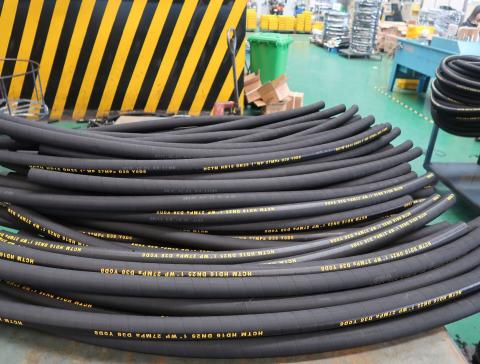Acid fracturing hoses can fail
Acid fracturing uses chemicals to fracture rocks and oil wells. It is a common practice in the oil industry and involves injecting fluids through a hose or casing at a rate faster than the wellbore pressure. This causes a fracture in rock, which allows for a flow channel. This process can help restart a failed well.
To reduce fluid leakage when acid fracturing is used, certain materials can be added to the fracturing liquid. This is done by creating a filter cake on fracture faces. It also plugs the fracture's porosity or permeability.
There are many reasons why acid fracturing hoses can fail. The hose chafing against sharp objects or another hose is a common problem. Another common failure can be caused by improper assembly or installation. This can lead to a failure in the installation or routing of the hose.
If you suspect that your acid fracturing hose has a defect, it is important to inspect it thoroughly. The hose is damaged when it is bent, or it has cracked or split wires within. The material may also have kinks around the bend that can affect flow. The fitting may be bent too close or too far, which can cause rupture.
method of extending the life of acid fracturing hose
Certain additives can be added to fluid to prolong the life of acid-fracturing pipes. These additives can reduce fluid loss by creating a filter cake at the fracture face. Additionally, these additives can help reduce the friction generated while pumping the fluid down the tubing.
Among these additives is guar-based fluid, which is cross-linked with boron ions found in an aqueous borax/boric acid solution. This fluid has a higher concentration of boron than water, which makes it viscous. This fluid can also be used to transport proppants. It can also be reused for future fracturing jobs.
Another additive to a water-based acid fracturing fluid is acetic acid. This additive has anti-corrosive properties and will extend the life of the hose. However, it is not a good choice for carbonate reservoirs because it will plug the propping agent.
CO2 is another additive to acid-fracturing fluid. Injecting CO2 in the fluid will increase its flow rate and make it easier to reach the fracture walls. It is also more effective for deeper-seated wells than acid fracturing with water, since CO2 is more viscous. The injection of CO2 will also lead to more complex fracture networks, whereas water will cause fewer fractures.
You can also add acid-resistant surfactants in acid-fracturing fluid. These substances are suitable for treating ultra-low-permeability reservoirs. These additives have been shown to increase the viscosity and reduce the risk for near-well collapse.
minimum bending radius of acid fracturing hose
A hose's minimum bending radius is the minimum distance it can bend without losing strength and functionality. Failure to account for this factor could lead to hose damage and shortened service life. The bend radius is calculated using two parameters: inside radius and centerline radius. The centerline radius measures distance from the centerline of a hose. The inside radius measures radius from the hose's inside surface.
The minimum bend radius for a hydraulic hose is the smallest diameter it can bend. It is determined by how the hose was constructed. The smallest hoses have one or two layers of spiral wire, while the largest can contain four or more layers of spiral wire. Larger hoses have a stiffer construction and a greater bend radius.
The minimum radius of a hose's bend is an important safety feature. A bend that is too sharp can lead to leaks and fractures. To prevent this from happening, it is essential to guide or support the hose when it is being bent. The bending radius of a hose depends on the inside diameter, wall thickness, construction of inlays, and material. This is especially important for standing hoses, which will be subject to higher temperatures and pressure than a coiled one.
The minimum bending radius of an acid fracturing hose is crucial to a successful completion of the operation. This is a significant factor when working in gas reservoirs and ultra-deep wells. This is because the temperature in the reservoir and acid reacting to it will rise rapidly. Consequently, the length of the acid fracturing operation will be affected. Additionally, high-quality sealants and special packing materials are required for the sealing of the acid fracturing pipe.

